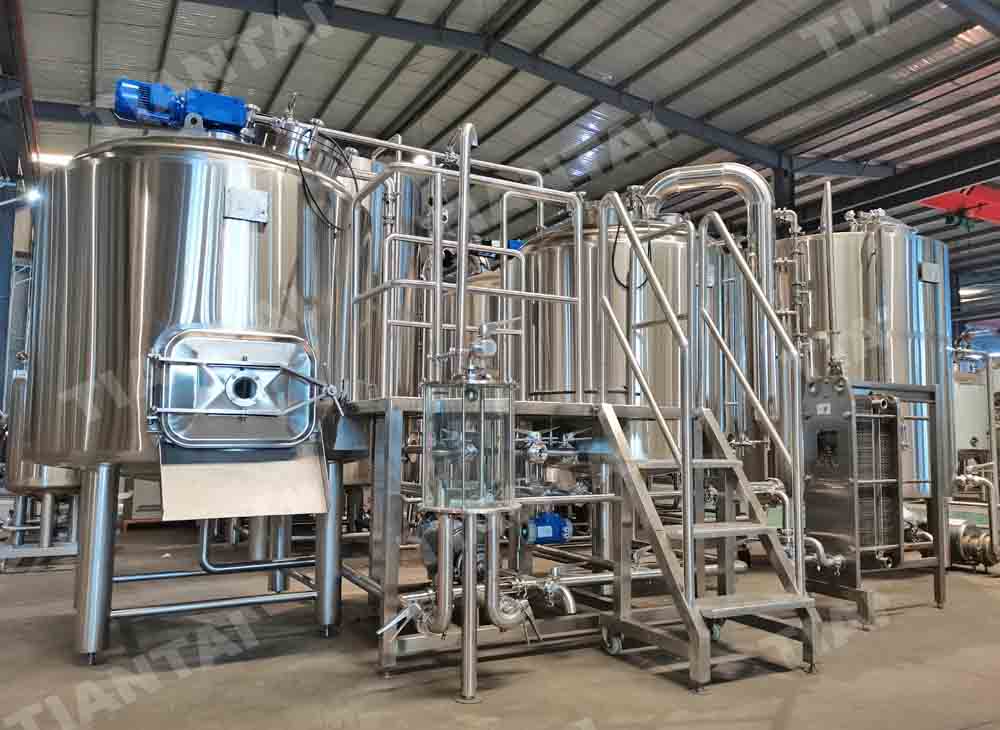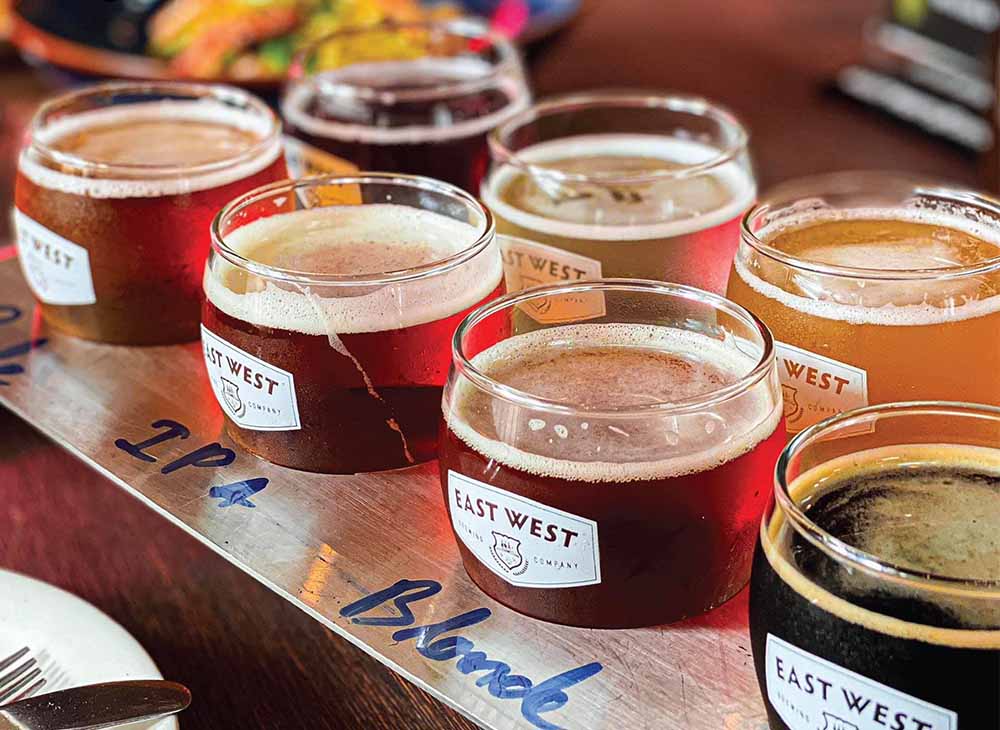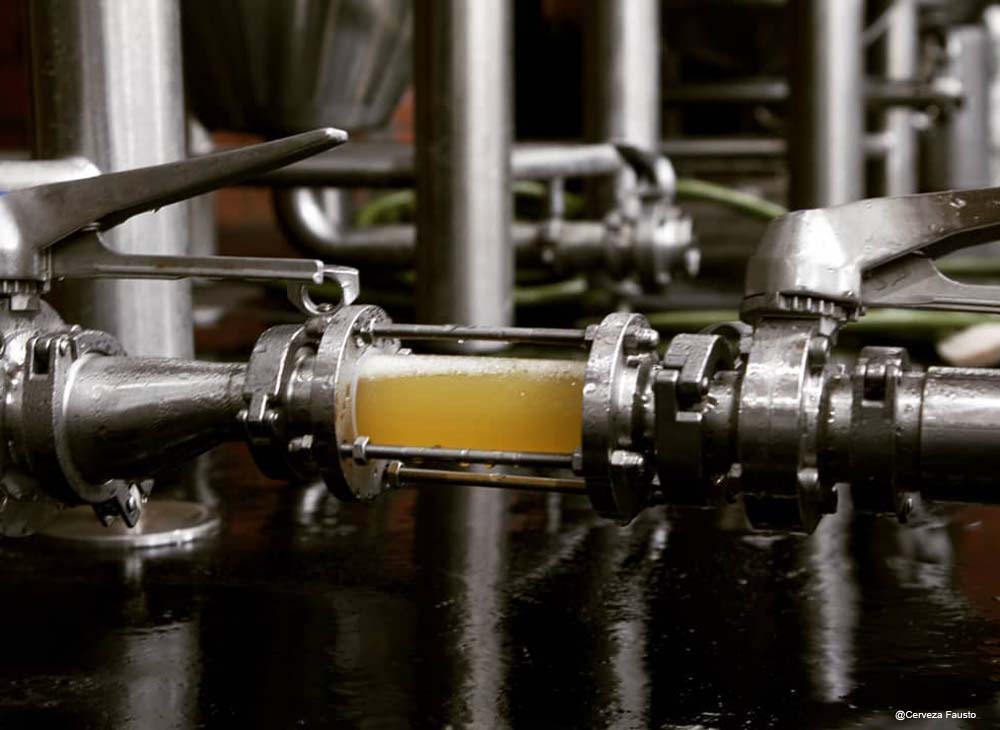Whirlpool And Dry Hopping Brewhouse Systems
- Aug 20, 2021
- 151
- tiantai
Whirlpool and dry hopping is necessary for 1bbl/3bbl/5bbl/ 7bbl/10bbl/15bbl/20bbl beer brewhouse system.
Although brewers have known this for the better part of a decade, adding hops to the whirlpool adds quite a bit of bitterness. In the various beers he studied, Justus measured utilization at 20-44%. That range is affected by the wort more than the conditions. Time isn’t a big factor. Most of the pick-up happens within ten minutes and then very little afterward. Given that in commercial breweries this step takes a lot longer than 10 minutes, time is irrelevant—though homebrewers should take note. The biggest effect is hop rate—the more hops you use, the lower the utilization. Additionally, the closer you are to saturation (around 100 IBUs), the lower the utilization. In other words, adding a modest amount of hopos to unhopped wort will result in the greatest utilization. Adding a lot of hops to already-bitter wort will result in the lowest utilization. Gravity also affects utilization, but Justus found that effect only really started after 13° Plato (1.053).
Fermentation and Dry-Hopping
Once fermentation starts, a third of the existing bitterness will vanish during fermentation (34% on average in Justus’ sample), most of it in the first day or two. That figure isn’t static: the type of yeast and gravity also affect loss. Low-flocculation yeasts (those that stay in suspension) scrub more IBUs than those that drop out more quickly. Higher-gravity worts, which cause more vigorous and longer fermentations, also suffer greater IBU loss. This suggests that whatever causes yeast to remain present and active in the wort longer will cause it to scrub more bitterness from the wort during fermentation.
Curiously, the IBU loss was bigger for beers with high whirlpool additions. That means that if you’re relying on whirlpool hops for bitterness, you’re going to lose more of them during fermentation. Finally, even centrifuging the finished beer doesn’t lower the bitterness tremendously. However, when he used both a centrifuge and a filter, the bitterness dropped another 15%.

Dry-Hopping and Increasing Bitterness
Of course, dry-hopping can create IBUs, so there’s an exchange happening in dry-hopped beers. The mechanism isn’t the same. The bitterness extracted during dry-hopping doesn’t come from iso-alpha acids, since there’s no heat for conversion, but rather humulinones (and possibly polyphenols). This accounts for what some people (but not all!) characterize as “soft” bitterness—a quality Justus identified. So how’s that all working? He looked specifically at several modern hazy IPAs they make.
In beers with two additions (initial charge 1-2 after start of fermentation, second at the end of fermentation), he was finding amazing increases in measured bitterness typically in the 20-30 IBU-range. “We’ve even done beers now where we dry-hop only at terminal gravity, 3-4 pounds per barrel, and we’ve seen an increase of 30-40 IBUs.”
In two different session hazies where hops were only added on the cold side (dry-hopped), they picked up 25 and 40 IBUs. “It really depends on what hops you’re using.” Justus speculates that higher-alpha hops have higher humulinone amounts, so the pick-up is greater.
Finally, he also found, and was amused by, the way hot-side hops reduced haze stability (that is, made them clearer), a downside for some breweries looking to amp the haze.
How much does it cost to start a microbrewery? TIANTAI company is turnkey micro brewing equipment manufacturer. Breweries for sale UK, breweries for sale in Canada, breweries for sale Australia, breweries for sale America......
Derrick
Sales Manager
[email protected]
Tiantai Beer Equipment
Although brewers have known this for the better part of a decade, adding hops to the whirlpool adds quite a bit of bitterness. In the various beers he studied, Justus measured utilization at 20-44%. That range is affected by the wort more than the conditions. Time isn’t a big factor. Most of the pick-up happens within ten minutes and then very little afterward. Given that in commercial breweries this step takes a lot longer than 10 minutes, time is irrelevant—though homebrewers should take note. The biggest effect is hop rate—the more hops you use, the lower the utilization. Additionally, the closer you are to saturation (around 100 IBUs), the lower the utilization. In other words, adding a modest amount of hopos to unhopped wort will result in the greatest utilization. Adding a lot of hops to already-bitter wort will result in the lowest utilization. Gravity also affects utilization, but Justus found that effect only really started after 13° Plato (1.053).
Fermentation and Dry-Hopping
Once fermentation starts, a third of the existing bitterness will vanish during fermentation (34% on average in Justus’ sample), most of it in the first day or two. That figure isn’t static: the type of yeast and gravity also affect loss. Low-flocculation yeasts (those that stay in suspension) scrub more IBUs than those that drop out more quickly. Higher-gravity worts, which cause more vigorous and longer fermentations, also suffer greater IBU loss. This suggests that whatever causes yeast to remain present and active in the wort longer will cause it to scrub more bitterness from the wort during fermentation.
Curiously, the IBU loss was bigger for beers with high whirlpool additions. That means that if you’re relying on whirlpool hops for bitterness, you’re going to lose more of them during fermentation. Finally, even centrifuging the finished beer doesn’t lower the bitterness tremendously. However, when he used both a centrifuge and a filter, the bitterness dropped another 15%.

Dry-Hopping and Increasing Bitterness
Of course, dry-hopping can create IBUs, so there’s an exchange happening in dry-hopped beers. The mechanism isn’t the same. The bitterness extracted during dry-hopping doesn’t come from iso-alpha acids, since there’s no heat for conversion, but rather humulinones (and possibly polyphenols). This accounts for what some people (but not all!) characterize as “soft” bitterness—a quality Justus identified. So how’s that all working? He looked specifically at several modern hazy IPAs they make.
In beers with two additions (initial charge 1-2 after start of fermentation, second at the end of fermentation), he was finding amazing increases in measured bitterness typically in the 20-30 IBU-range. “We’ve even done beers now where we dry-hop only at terminal gravity, 3-4 pounds per barrel, and we’ve seen an increase of 30-40 IBUs.”
In two different session hazies where hops were only added on the cold side (dry-hopped), they picked up 25 and 40 IBUs. “It really depends on what hops you’re using.” Justus speculates that higher-alpha hops have higher humulinone amounts, so the pick-up is greater.
Finally, he also found, and was amused by, the way hot-side hops reduced haze stability (that is, made them clearer), a downside for some breweries looking to amp the haze.
How much does it cost to start a microbrewery? TIANTAI company is turnkey micro brewing equipment manufacturer. Breweries for sale UK, breweries for sale in Canada, breweries for sale Australia, breweries for sale America......
Derrick
Sales Manager
[email protected]
Tiantai Beer Equipment




.jpg)